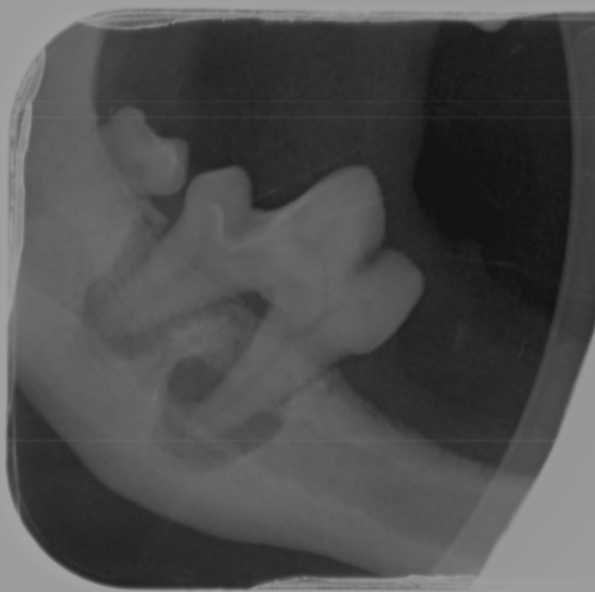Dental disease is one of the most common conditions in adult dogs and cats. It results in changes to both the oral cavity and internal organs as bacteria builds up and spreads to other locations. Dental disease usually affects the supporting structures of the teeth, including areas hidden below the gumline. Due to this, both the tooth and underlying structures require treatment and care once disease is present. The gold standard of care when managing dental and periodontal disease includes a professional dental cleaning. There are many misconceptions regarding what is needed to fulfill all the needs of your pet when a dental cleaning is done. Therefore, we will review what you can expect on the day of your pet’s dental at Health Care for Pets Hospital and what items should be included in a routine professional dental cleaning, evaluation and treatment procedure.
#1: An unanesthetized oral exam is done initially to provide an idea of the level of disease affecting your pet’s mouth. A dental care plan will be discussed.
#2: At this same visit or at another scheduled within the month of the dental procedure, blood is drawn to screen your pet’s health. This assesses for any increased risk when undergoing anesthesia.
#3: On the day of your pet’s anesthetized dental cleaning, he/she will receive a pre-operative examination. Soon after, medications will be given to ease any worry and alleviate pain associated with extractions if they are warranted.
#4: Your pet will be given a medication to place and keep them under anesthesia. His/her vitals will be monitored closely throughout the procedure to ensure they are kept safe and sound while receiving their dental care.
#5: Radiographs (x-rays) will be taken of each and every tooth. Our veterinarian/s will also examine each tooth surface. These two practices will allow us to identify both the level of dental and periodontal disease as well as those teeth warranting further management.
#6: Scaling and polishing of the teeth both above and below the gumline is completed while your pet is anesthetized to remove plaque and provide a clean, shiny surface. This allows gingivitis to heal and lower bacterial counts.
#7: Extractions are completed during the same anesthetic event. Your pet will receive a nerve block to numb the mouth if extractions are needed. Absorbable sutures are placed to aid in healing.
#8: While your pet recovers from the dental procedure, we will monitor for pain and any other changes that require treatment. At pick up, we will discuss a dental home care plan together that is recommended between cleanings.
Companion animal dentistry is evolving quickly as animals are living longer and higher quality care is expected. We work to evolve with the latest changes in the field to provide the best patient quality care and to keep as many healthy teeth in their mouth as possible.
Dr. Katrina Jiamachello, Health Care for Pets Hospital

 Veterinarians Mills River | Health Care for Pets Hospital
Veterinarians Mills River | Health Care for Pets Hospital

